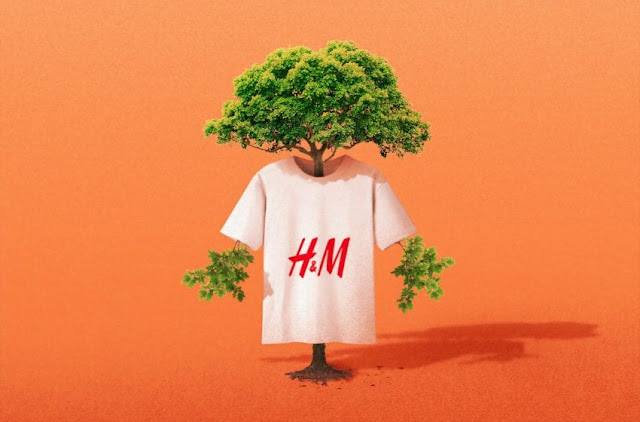Earth First Activewear and How It's Made
by Annabelle Andersen
 |
| Athletic set from Gilfriend Collective |
When you want to prioritize sustainability, buying new clothes of any kind is difficult, but even more so when attempting to purchase sportswear. Some of the most popular fabrics used in sportswear and athleisure clothing are polyester and nylon, both of which are made from petroleum-based plastics. The fashion industry has a devastating impact on the environment and the rampant use of plastic within fabric production is one of the factors which contribute most to fashion’s poor environmental record.
The athleticwear sector of the fashion industry has been growing steadily over the past decade with the U.S sportswear market bringing in $105.1 billion in 2020, and the pandemic has not slowed the industry down. (Forbes, 2021) In fact, during the pandemic, the entire industry saw consumers shift towards more comfortable clothing, and the athleticwear sector saw a large jump in interest as consumers were attempting to stay fit at home.
While this growth in conjunction with sportswear’s dependency on plastic-based synthetics is cause for concern, many companies are making sustainability central to their goals. How can sustainable practices be incorporated in a sector of the industry so typically reliant on plastic-based fabrics?
Zero-Waste Ideals
The fashion industry discards roughly 15% of all fabric that it uses, which results in massive waste. Waste reductive pattern drafting and repurposing wastage fabric are steps some companies are taking to limit their environmental impact. When reducing waste, designers need to be creative and sometimes pursue non-traditional designs or processes. Traditional pattern cutting results in a lot of waste due to the way curved pieces of the pattern align on the fabric, especially in sportswear where garments are typically more figure hugging. Redesigning patterns to limit the curves and make the pieces fit together with fewer gaps creates less waste. If there are fabric scraps left at the end of pattern cutting, those pieces can be gathered and sewn into headbands, scrunchies, and boxing hand wraps.
To extend this zero-waste ethos into more of their company, some athleticwear brands utilize recycling programs wherein the consumer can return old or unwanted product, which can either be deep cleaned and resold or broken back down into its fibers and reused in a new garment.
New Synthetics
This recycling approach can also be used in fabric creation to create an alternative to the crude-oil-reliant production of virgin polyester. Post-consumer plastics like that from water bottles and fishing nets get taken out of the ocean and landfills, are cleaned, dried, and broken into minuscule pieces or ‘chips.’ These ‘chips’ are melted to undergo the polymerization process and are then extruded and spun into fibers which are twisted into yarn. This new fabric can be used in all the ways of virgin polyester with a smaller environmental impact. Recycled polyester produces 30% fewer carbon emissions than virgin polyester production and requires up to 40% less energy (Sustainable Fashion Collective, 2015).
However, the synthetics that the sportswear field is largely reliant on need not always be created from plastics. TENCEL™ uses chemicals to break down wood pulp and turn it into a moisture-wicking and soft fabric. Its production process is similar to that of rayon; however, TENCEL™ requires a smaller quantity of less-toxic chemicals than rayon does and recycles all the water and chemicals used in the production process to minimize waste. (Good Housekeeping, 2022) It can be used alone or blended with other fibers like recycled polyester or organic cotton to create comfortable, breathable activewear.
Of course, matching sets and regenerated nylon are not required for your fitness journey; the most sustainable option when looking to stay fit is to wear what you already have. But if you are just beginning to hit the gym or want something new to motivate you, consider checking out these brands which prioritize the earth:
Girlfriend Collective is size-inclusive, transparent about the production of their recycled nylon and polyester, and has a 20% student discount! (Women’s)
Reformation Active uses Repreve, a fabric made of 100% post-consumer plastic, which uses 45% less energy and 20% less water than virgin polyester (Women’s)
LNDR uses recycled polyamide and organic cotton in small batches shipped in biodegradable packaging (Men’s and Women’s)
Tripulse uses TENCEL™ and biodegradable elastane in simple low waste designs, plus they turn fabric waste into handwraps for boxing (Women’s)



Comments
Post a Comment